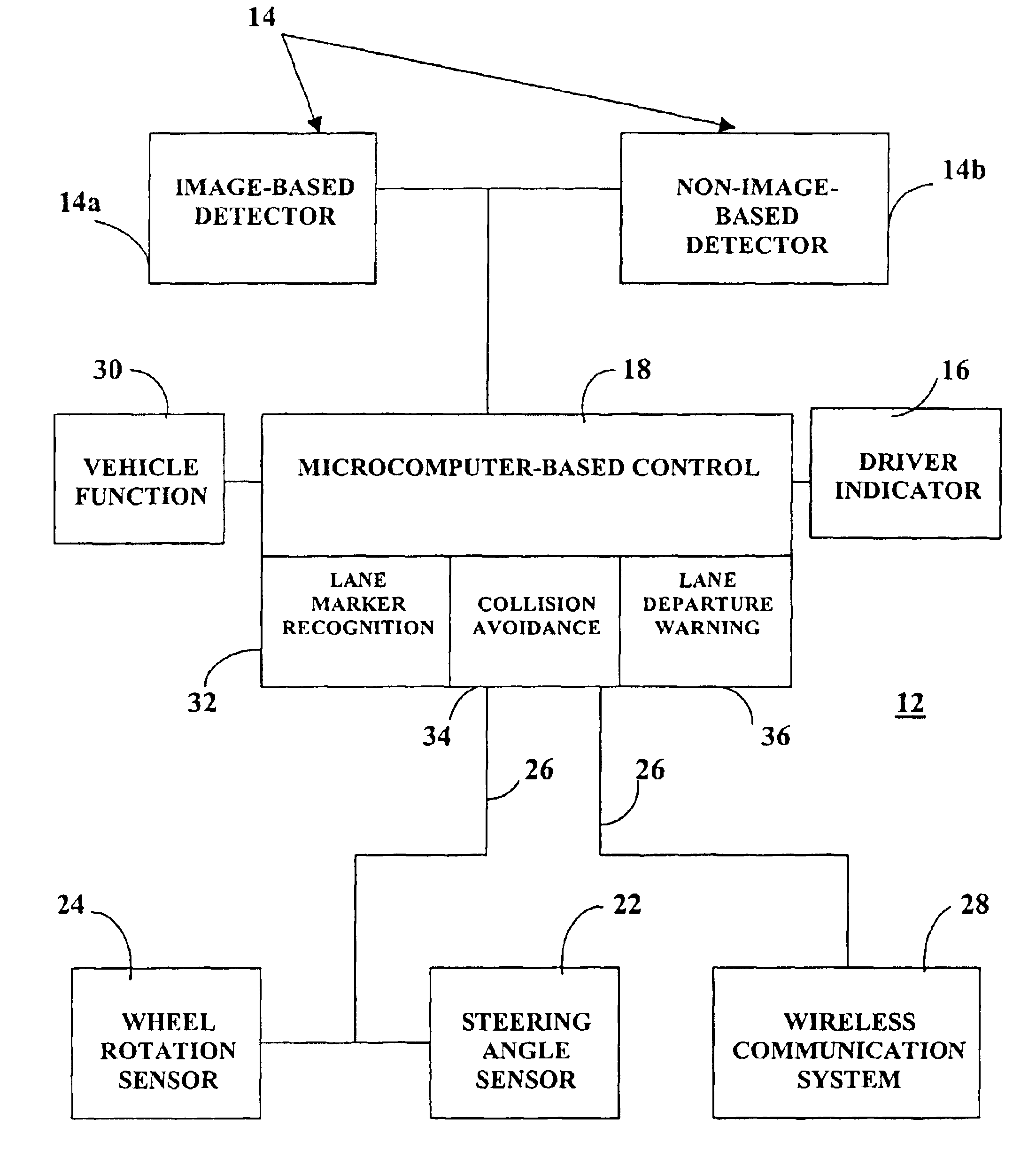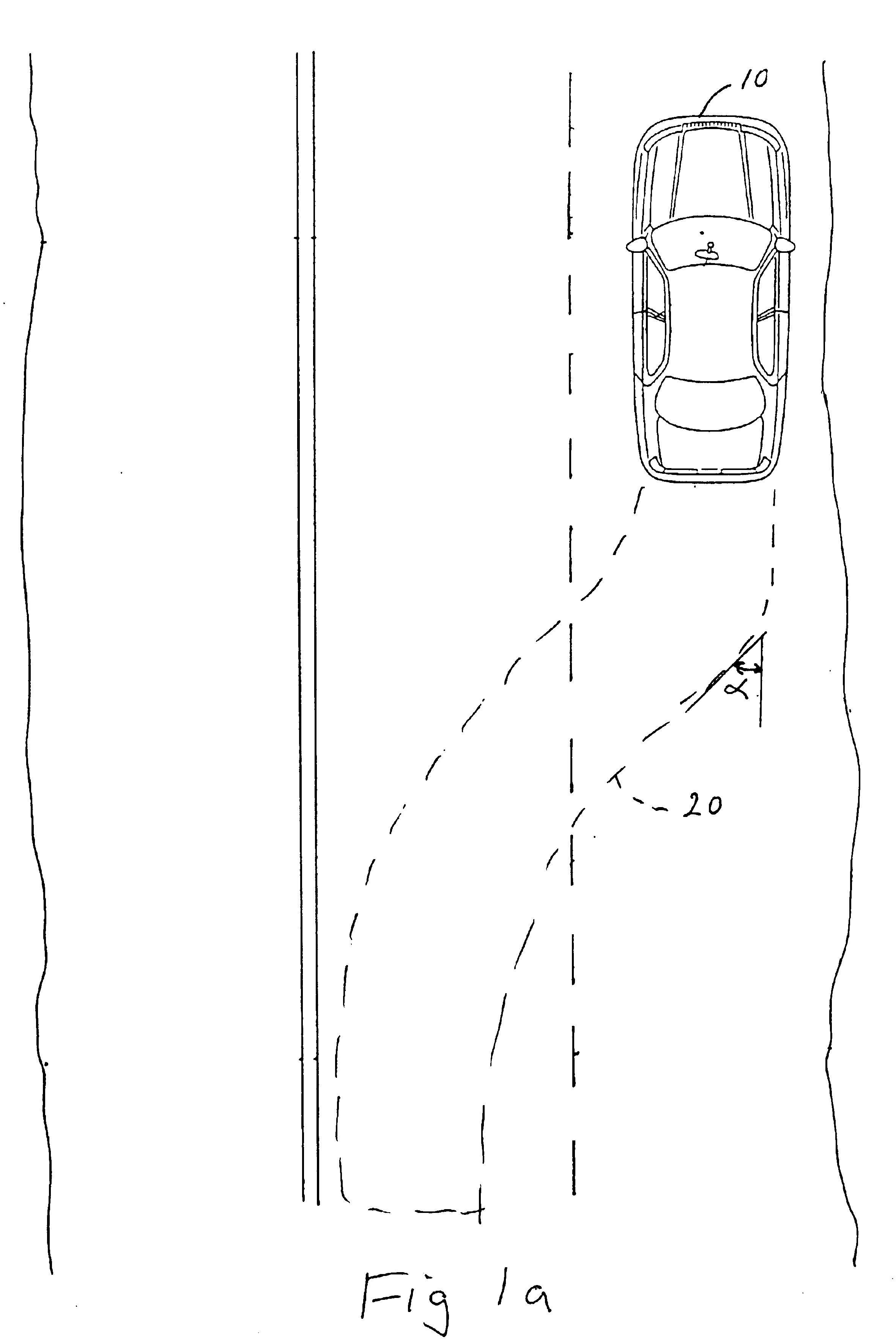Automotive lane change aid
a technology for lane change and autos, applied in the field of object detection, can solve the problems of insufficient prior art systems in many driving conditions, vehicle drivers experiencing blind spots, and failure of departure-warning algorithms to adequately recognize lane change events
- Summary
- Abstract
- Description
- Claims
- Application Information
AI Technical Summary
Problems solved by technology
Method used
Image
Examples
Embodiment Construction
[0015]Referring to the drawings and the illustrative embodiments depicted therein, a Lane Change Aid (LCA) system 12 of the present invention as illustrated with a vehicle 10 includes a control 18 and an indicator and / or display system 16 that warns a vehicle operator if an intended, or attempted, lane change maneuver could cause an approaching rearward vehicle to brake and decelerate at an unsafe rate, or that otherwise constitutes a highway hazard. In Lane Change Aid (LCA) system 12, the dimension, in the direction of travel, of a zone 20 to be monitored may be calculated based on an assumed maximum relative velocity between a detecting vehicle and an approaching rearward vehicle, and a safe braking and deceleration assumption. Depending on the assumptions made, the required detection zone may vary in length, such as extending rearward from 50 to 100 m, or more. At 100 m, the road curvature behind the vehicle may have a significant impact on the position of the lane of the detecte...
PUM
 Login to View More
Login to View More Abstract
Description
Claims
Application Information
 Login to View More
Login to View More - R&D
- Intellectual Property
- Life Sciences
- Materials
- Tech Scout
- Unparalleled Data Quality
- Higher Quality Content
- 60% Fewer Hallucinations
Browse by: Latest US Patents, China's latest patents, Technical Efficacy Thesaurus, Application Domain, Technology Topic, Popular Technical Reports.
© 2025 PatSnap. All rights reserved.Legal|Privacy policy|Modern Slavery Act Transparency Statement|Sitemap|About US| Contact US: help@patsnap.com



